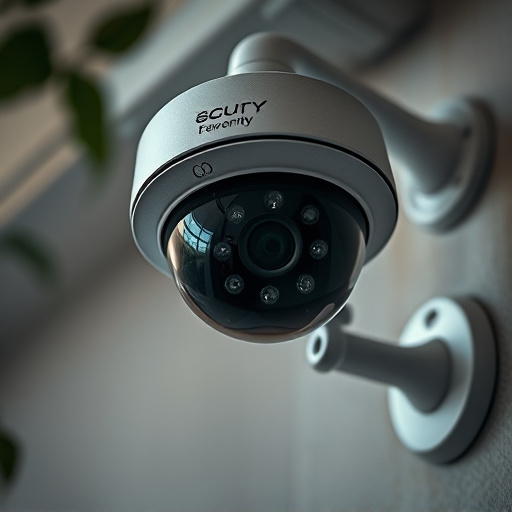Optimal fake security camera height placement balances privacy and visibility, deterring criminals with clear detail capture and reduced predictability. Strategic positioning at or slightly above eye level enhances deterrence without compromising aesthetics in residential or commercial settings. Varying heights prevent foot and aerial intrusions, combining real and fake cameras for maximum security.
In today’s security-conscious world, strategically placing fake security cameras can significantly deter crime. This article delves into the science behind optimal fake security camera height placement, exploring how visual coverage at eye level enhances security. We examine factors influencing above-eye-level camera positioning and provide tips for discreet yet effective setup. Learn about common mistakes to avoid and discover advanced techniques to fortify your security with strategic fake camera placement strategies.
- Understanding Visual Coverage at Optimal Heights
- Factors Affecting Camera Placement Above Eye Level
- Discreetly Positioning Cameras for Maximum Effectiveness
- Common Mistakes to Avoid in Fake Camera Setup
- Enhancing Security with Strategic Fake Camera Placement Techniques
Understanding Visual Coverage at Optimal Heights
Visual coverage is a key aspect of any security camera system, and optimal placement starts with understanding the ideal height for comprehensive visualization. When it comes to fake security cameras, positioning them at strategic heights ensures maximum effectiveness in deterring potential criminals. Research suggests that mounting cameras between 2-3 meters (6.5-10 feet) above ground level provides an effective balance between clear visibility and privacy concerns.
At this height, the camera’s field of view can cover a significant area, capturing crucial details such as facial expressions, vehicle license plates, and body language without intruding on individuals’ personal spaces. This strategic placement also allows for better detection of unusual activities or potential threats, enhancing overall security measures.
Factors Affecting Camera Placement Above Eye Level
When strategizing fake security camera placement, one of the most critical factors to consider is the fake security camera height placement. Cameras positioned above eye level offer a significant advantage in terms of coverage and deterrent effect. This optimal height range typically falls between 5 to 7 feet (approximately 1.5 to 2.1 meters) from the ground, ensuring a clear line of sight without obstructing natural movements or angles.
Several elements influence this decision: interior design, lighting conditions, and the size and type of space. In residential settings, aligning camera placement with existing fixtures like light switches or door handles can make them less conspicuous. Commercial spaces may require additional considerations, such as accounting for high ceilings or unique architectural features, to ensure comprehensive surveillance without compromising aesthetics.
Discreetly Positioning Cameras for Maximum Effectiveness
To achieve maximum effectiveness, fake security cameras should be positioned discreetly but strategically. One key aspect is considering their height placement. Mounting cameras at eye level or slightly above can provide a more realistic and intimidating presence, as it mimics actual surveillance. This discourages potential intruders who may feel they’re being watched.
However, creative use of height can also serve as a surprise factor. Cameras placed lower, perhaps near the ground or in concealed spots like fake rock formations, can capture unexpected angles while maintaining an element of stealth. This unpredictability adds another layer of security, making it harder for would-be thieves to anticipate and avoid detection.
Common Mistakes to Avoid in Fake Camera Setup
Many people install fake security cameras as a deterrent, but common mistakes in their setup can undermine their effectiveness. One of the most frequent errors is placing them at eye level or too low. Criminals are savvy; they know to look for cameras that aren’t challenging to disable or obstruct. Thus, positioning cameras too close to the ground makes them easy targets for tampering or cover-ups.
Similarly, poor placement includes hiding cameras in plain sight without strategic angles. For instance, mounting a camera directly on a wall or in a fixed position where it’s easily predictable and avoidable can allow potential intruders to bypass the supposed security measure. The key is to mimic real camera setups with subtle variations, ensuring they offer a realistic deterrent without clear lines of sight being compromised.
Enhancing Security with Strategic Fake Camera Placement Techniques
Strategic placement of fake security cameras can significantly enhance physical security measures, deterring potential criminals from targeting properties. One key technique involves varying camera heights to cover all angles effectively. Lower-mounted cameras are ideal for capturing ground-level activity and preventing foot-based intrusions, while ceiling- or pole-mounted cameras provide a bird’s-eye view, detecting aerial threats and unusual behavior.
By combining real and fake cameras at different heights, security systems can create an illusion of comprehensive surveillance, tricking would-be intruders into believing they are constantly watched. This multi-layered approach not only adds an extra layer of protection but also acts as a powerful deterrent, making properties less attractive to criminals.
Strategic placement of fake security cameras at optimal heights can significantly enhance any security system. By understanding visual coverage, considering factors above eye level, and discreetly positioning them for maximum effectiveness, you can deter potential threats and create a safer environment. Avoid common mistakes in setup to ensure these fake cameras serve their purpose, acting as a powerful deterrent without compromising aesthetics.
